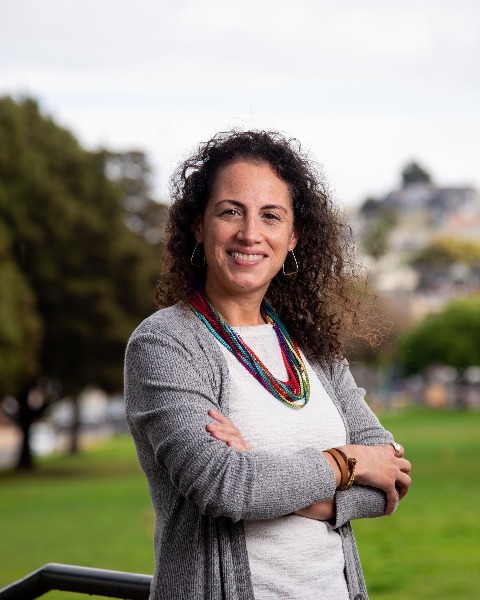Back
Future of Work, Upskilling and Reskilling
Sparking Downtown Recovery Through the Public Realm
Tuesday, April 4, 2023
10:15 AM – 11:00 AM CDT
Location: 118A
CM | .75
Division Endorsement: New Urbanism Division

Laura Crescimano
Principal
SITELAB urban studio
San Francisco, California- DV

Claude Imbault
Deputy Director
Downtown SF Partnership
San Francisco, California
Moderator and Speaker(s)
Speaker(s)
Downtowns and urban commercial districts today are forced to reckon with a new reality. Although they had been cities’ centers of gravity, flooded with workers who spent five days a week frequenting coffee shops, lunch spots, bars, and gyms, the COVID-19 pandemic fundamentally changed how and where we work. Many office-dominated downtowns are facing unprecedented challenges. They struggle to attract people to return, especially those who can choose to work from home.
As planners, we must think critically and creatively about how to evolve the role downtowns play in today’s cities. A fundamental place to begin – and where planners have influence – is re-energizing the public realm from the ground up. What if downtown streets and open spaces were vibrant with art and greenery and centered around pedestrians? What if engaging programming attracted more than office workers? Presenters focus on several recently published public-realm plans from commercial districts in San Francisco and New York City. They highlight how plans were developed to face critical challenges and aid economic recovery, and showcase tactics and strategies that other urban commercial districts could replicate.
NPC Peer Reviewers assigned this presentation a learning level of Intermediate. For more on learning-level descriptions, visit our General Information Page.
As planners, we must think critically and creatively about how to evolve the role downtowns play in today’s cities. A fundamental place to begin – and where planners have influence – is re-energizing the public realm from the ground up. What if downtown streets and open spaces were vibrant with art and greenery and centered around pedestrians? What if engaging programming attracted more than office workers? Presenters focus on several recently published public-realm plans from commercial districts in San Francisco and New York City. They highlight how plans were developed to face critical challenges and aid economic recovery, and showcase tactics and strategies that other urban commercial districts could replicate.
NPC Peer Reviewers assigned this presentation a learning level of Intermediate. For more on learning-level descriptions, visit our General Information Page.
Learning Objectives:
- Reimagine the traditional role of downtowns and urban commercial areas as transforming from nine-to-five workplaces to attractive destinations with a broader appeal.
- Consider how today’s downtown public realms are being creatively re-thought and adapted to aid in post-pandemic economic recovery.
- Develop deployment strategies in streets, open spaces, and adjacent ground-floor spaces to draw energy and people back to urban centers.
